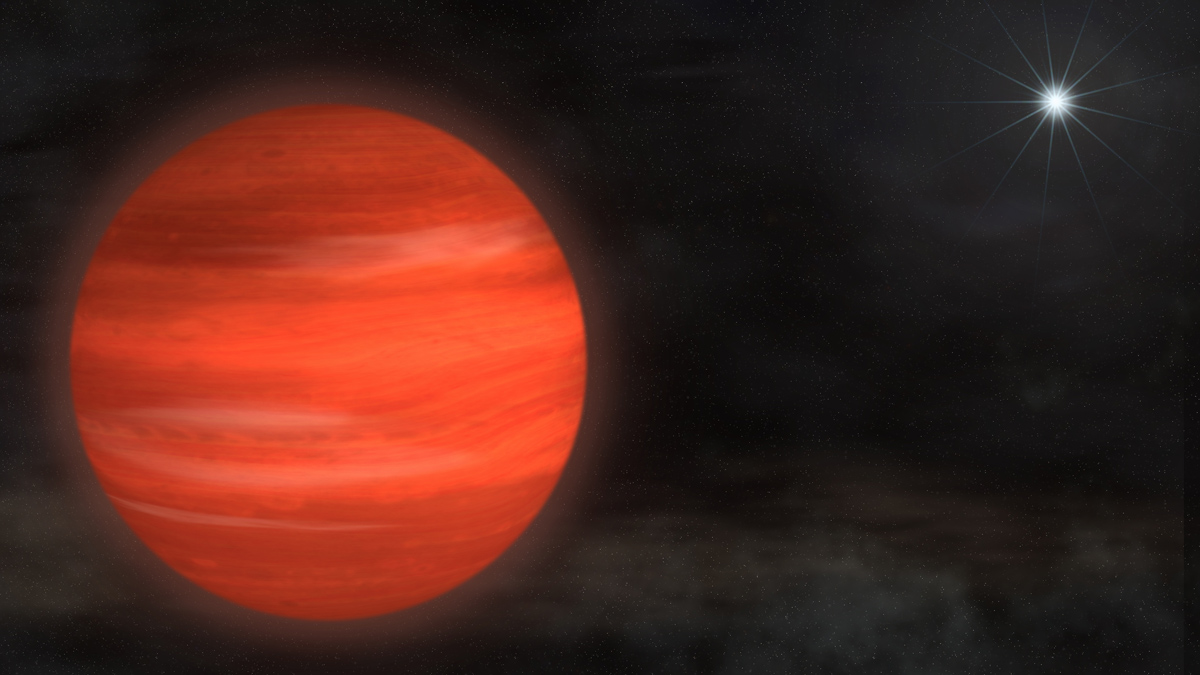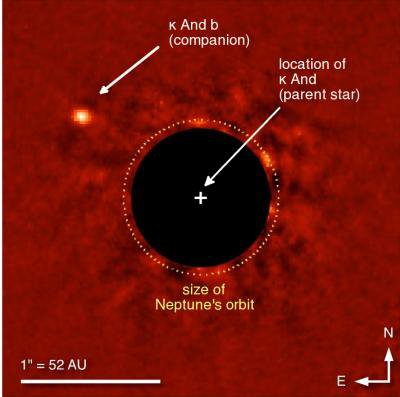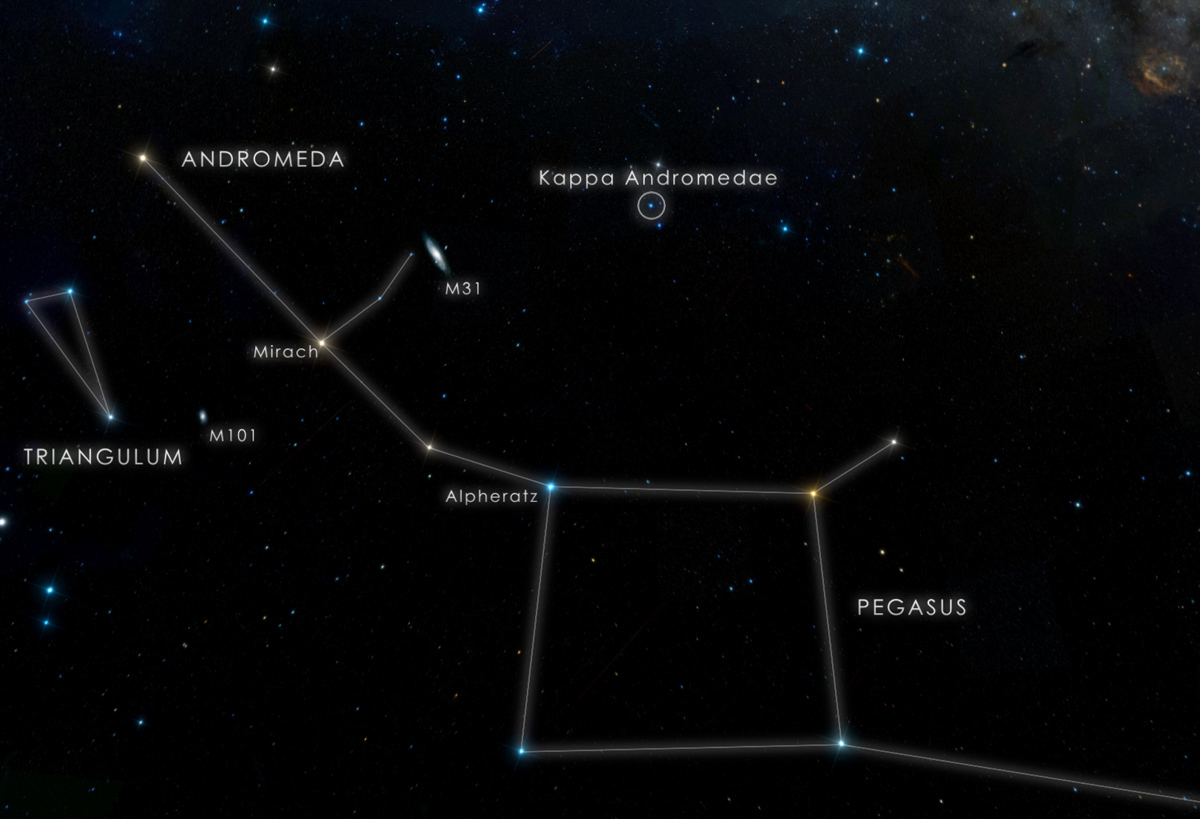'Super-Jupiter' Discovery Dwarfs Solar System's Largest Planet

In a rare direct photo of a world beyond Earth, astronomers have spotted a planet 13 times more massive than Jupiter, the largest planet in our own solar system.
The planet orbits a star called Kappa Andromedae that is 2.5 times the mass of the sun and is located 170 light-years away from Earth. As a gas giant larger than Jupiter, it's classified as a "super-Jupiter."
Astronomers say the object's immense size places it right on the edge of the classifications for giant planets and a type of failed star known as a brown dwarf. Its official name is Kappa Andromedae b, or Kappa And b for short, and it likely has a reddish glow, researchers said.
"According to conventional models of planetary formation, Kappa And b falls just shy of being able to generate energy by fusion, at which point it would be considered a brown dwarf rather than a planet," Michael McElwain, a member of the discovery team at NASA's Goddard Space Flight Center in Greenbelt, Md., said in a Nov. 19 statement. "But this isn't definitive, and other considerations could nudge the object across the line into brown dwarf territory." [Super-Jupiter Discovery in Photos (Gallery)]

The object is an interesting test case for theories of planet formation, scientists say. Based on observations of this system, the super Jupiter appears to have formed in the same way ordinary, lower-mass exoplanets do, by coalescing from a "protoplanetary disk" of material orbiting a nascent star.
That's because its orbit, somewhat wider than the path Neptune takes around our sun, is at a comparable distance to planetary orbits in the solar system. Additionally, its star, Kappa Andromedae, is relatively young, at about 30 million years old (for comparison, the sun is roughly 5 billion years old). These clues point toward a formation story typical of smaller planets.

Previously, some scientists had doubted that such large stars could give birth to planets in protoplanetary disks. The new finding indicates that this star probably did just that.
Get the Space.com Newsletter
Breaking space news, the latest updates on rocket launches, skywatching events and more!
The new photo was snapped by Japan's Subaru 8-meter telescope on the summit of Mauna Kea in Hawaii. Alien planets are extremely difficult to image directly because their stars are always so much brighter, and outshine any planets.
To capture this picture, astronomers looked in infrared light, and used a technique to hide the glare from the star in order to reveal the relatively faint dot of light from the planet. More than 800 planets have been discovered beyond the solar system, but only a handful have been imaged directly so far.

The parent star of Kappa And b, Kappa Andromedae, can be seen by stargazers from Earth without requiring a telescope, NASA officials said. The star can be easily seen in the night sky above the constellation of Pegasus from suburban areas, they added.
The discovery will be published in an upcoming issue of the Astrophysical Journal Letters.
This story was updated at 4:26 p.m. ET to include new comments on the Super-Jupiter discovery.
Follow SPACE.com on Twitter @Spacedotcom. We're also on Facebook & Google+.
Join our Space Forums to keep talking space on the latest missions, night sky and more! And if you have a news tip, correction or comment, let us know at: community@space.com.

Space.com is the premier source of space exploration, innovation and astronomy news, chronicling (and celebrating) humanity's ongoing expansion across the final frontier. Originally founded in 1999, Space.com is, and always has been, the passion of writers and editors who are space fans and also trained journalists. Our current news team consists of Editor-in-Chief Tariq Malik; Editor Hanneke Weitering, Senior Space Writer Mike Wall; Senior Writer Meghan Bartels; Senior Writer Chelsea Gohd, Senior Writer Tereza Pultarova and Staff Writer Alexander Cox, focusing on e-commerce. Senior Producer Steve Spaleta oversees our space videos, with Diana Whitcroft as our Social Media Editor.









